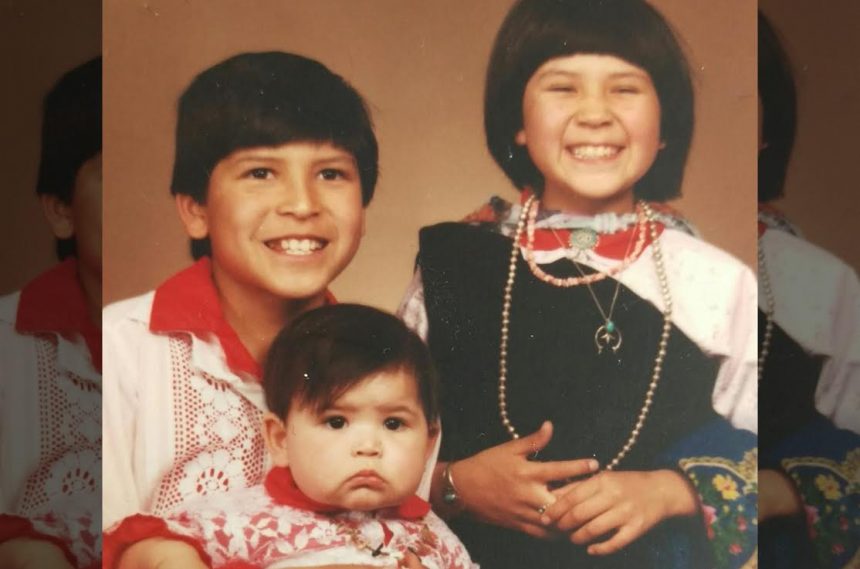Why didn’t anyone tell me how to be an Indian? I had no idea I was missing the tomahawk and the beaded, neon headdress. I forgot to stand with folded arms. And why can’t I remember to speak in the stoic, broken English of my ancestors? I guess my beautiful white moccasins and their tough leather soles are going to have to wait. Halloween is coming…time to get authentic.
Recently, I wandered the aisles of the seasonal Halloween store looking for my son’s costume. Amid the piles of glitter and groovy peace necklaces, I stumbled across a costume meant for young girls: the Give Thanks Indian Costume. A young girl stands in a sassy pose with her hand up in the “Hau” greeting. She wears the fringe, the beads and the headband. Online, the description touts her ability to “show those Pilgrims a good time.”

It’s gotten old. Must people of color continually defend their histories and cultures from uninspired, sequined stereotypes and “lighthearted” desecrations?
Or, is it getting old that people like me won’t “just drop it already”? Afterall, it’s Halloween. It’s supposed to be fun and playful! Perhaps I am being “too sensitive.” Perhaps it’s all in good fun and I need to “learn how to take a joke.” Hey, maybe these costumes are not meant to offend, but are meant to “honor” my heritage.
Here’s what I think: these “little jokes” about my culture are not jokes at all, but symptoms of very real and present racism that people of color deal with every single day. Native “inspired” costumes trivialize my culture. They take the sacred and make it sensational, they take art and create an attraction.
At first glance, some people might not see these costumes as offensive. It’s become so pervasive to mock and trivialize cultures, the practice is often even accepted among Natives and other people of color. This is an example of one of the more insidious effects of racism: we start to internalize it and hate ourselves for what we are and how we look. Compared to white colonizers, we are ugly, we are dumb and we are worthless. And either we start to think it’s okay to disrespect our own cultures, or, we think we had better make fun of it before someone else does. Neither feels good.
These images perpetuate the idea that all Indigenous people can be lumped together to fit a whitewashed, western-movie idea of what an Indian is. In reality, there are so many distinct and beautiful Native nations and cultures.
No one benefits from such gross misinformation. Indigenous people become further oppressed and marginalized and others remain willfully ignorant of the damage they cause.
Internalized racism thrives when young people of color, especially children, see the most fundamental parts of their identity desecrated for the enjoyment of others. The pain renders some bitter and aggressive. It can stop ambition dead in its tracks.
Native culture is not the only one caught in the crosshairs of costume manufacturers. A simple Google search produces a gallery of ignorance. From sexy Chinese takeout boxes to happily, willfully painted people in blackface. Even celebrities have joined the “festivities.”
I am not opposed to fun. I love Halloween. I like watching creepy movies, planning a wicked costume and decorating my house. And I love seeing all the adorable trick-or-treaters come to my door.
This is the playfulness that people hide behind when defending their horrific costume choices. But for kids who identify as Native American, African American and so on, the message is clear: there is something inherently inferior about their ethnicity or culture, which makes it okay to be the butt of someone’s Halloween joke.


Leave a Reply